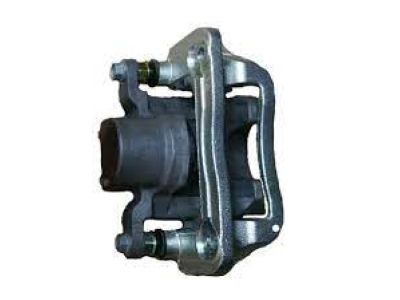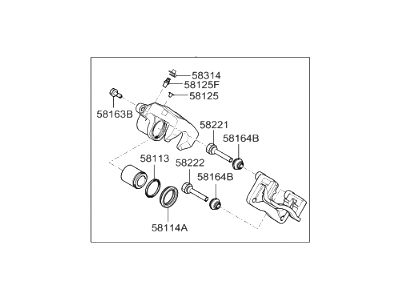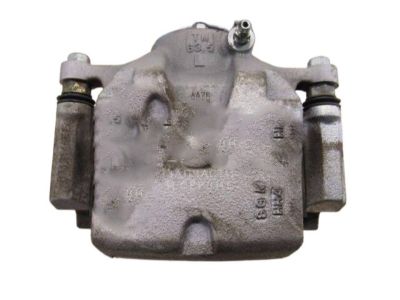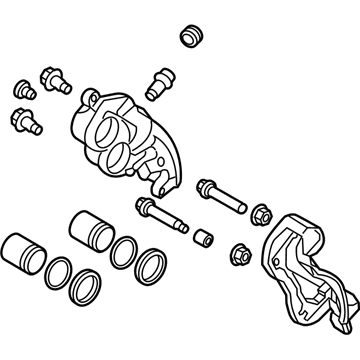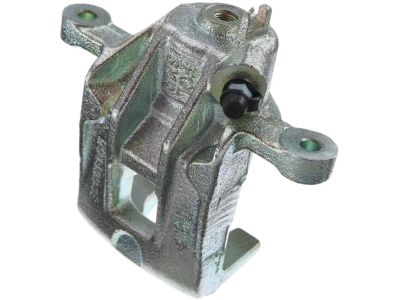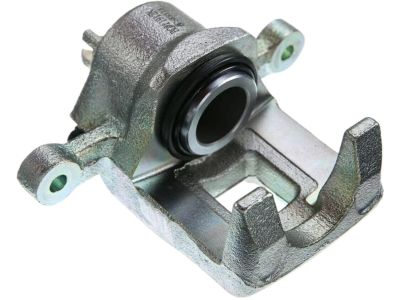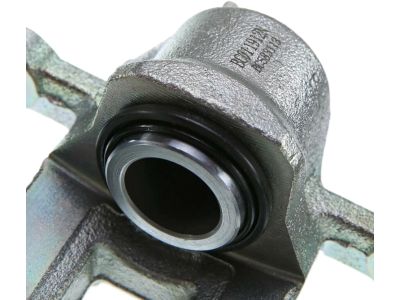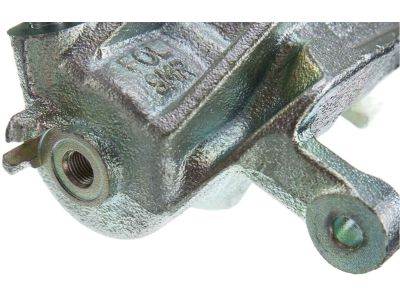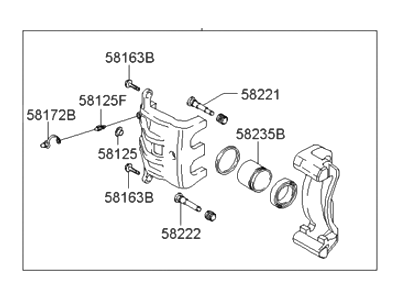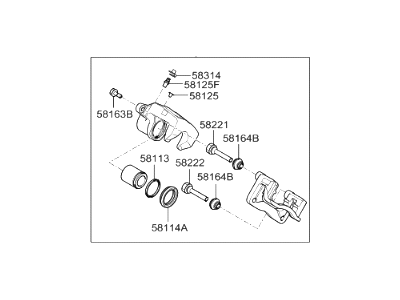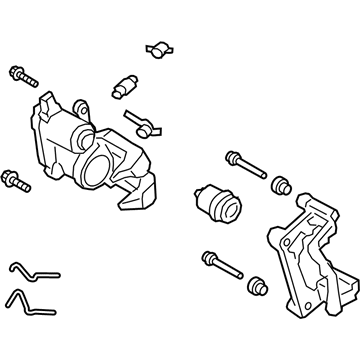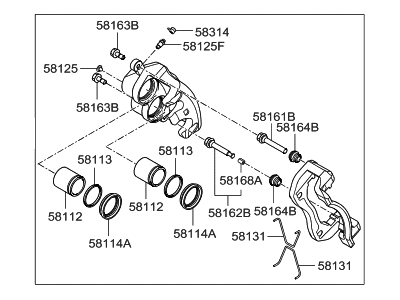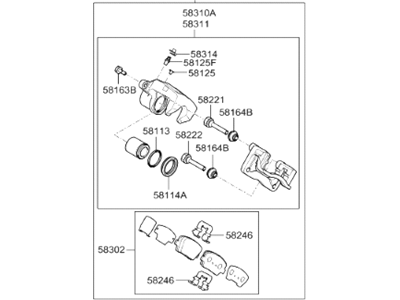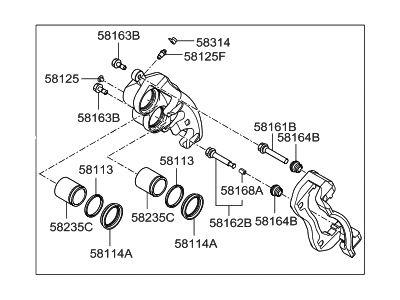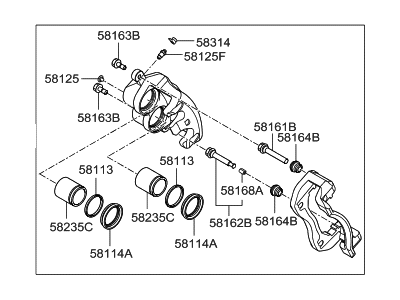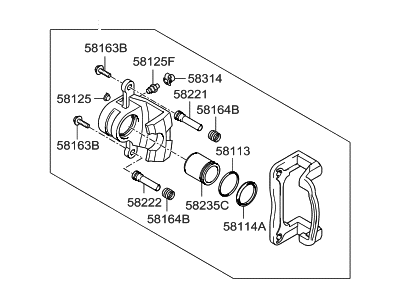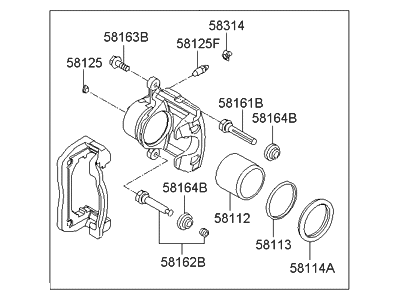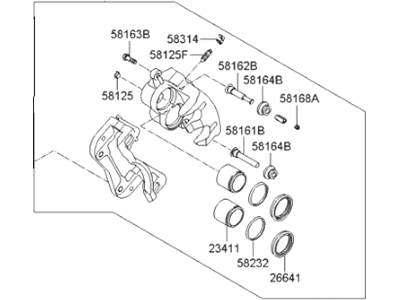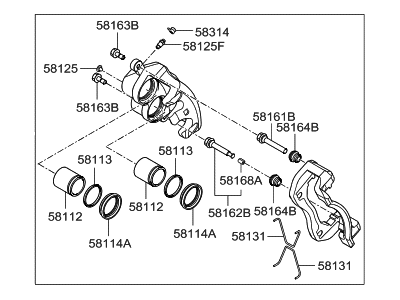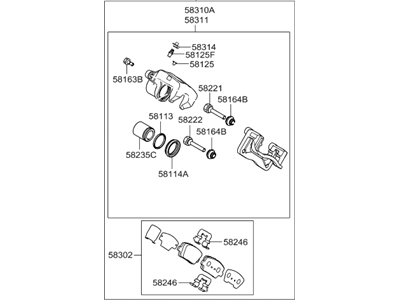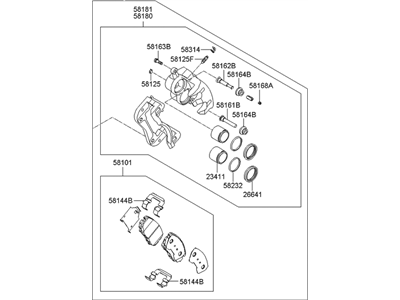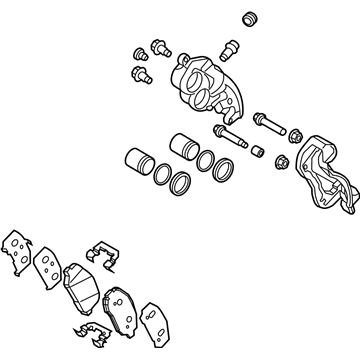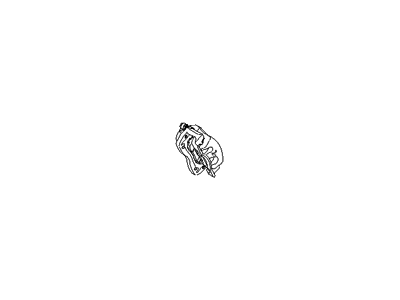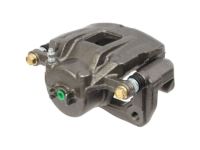×
- Hello
- Login or Register
- Quick Links
- Live Chat
- Track Order
- Parts Availability
- RMA
- Help Center
- Contact Us
- Shop for
- Hyundai Parts
- Hyundai Accessories


My Garage
My Account
Cart
Genuine Hyundai Santa Fe Brake Caliper
Caliper- Select Vehicle by Model
- Select Vehicle by VIN
Select Vehicle by Model
orMake
Model
Year
Select Vehicle by VIN
For the most accurate results, select vehicle by your VIN (Vehicle Identification Number).
72 Brake Calipers found

Hyundai Santa Fe Caliper Kit-Rear Brake,LH
Part Number: 58310-2WA01$335.96 MSRP: $472.02You Save: $136.06 (29%)Ships in 1-3 Business Days
Hyundai Santa Fe CALIPER Kit-Brake,LH
Part Number: 58180-S1A00$373.45 MSRP: $529.30You Save: $155.85 (30%)Ships in 1-3 Business Days
Hyundai Santa Fe Caliper Kit-Rear Brake,LH
Part Number: 58310-3AA00$178.67 MSRP: $251.03You Save: $72.36 (29%)Ships in 1-3 Business DaysHyundai Santa Fe Caliper Kit-Rear Brake,RH
Part Number: 58311-2WA01$335.96 MSRP: $472.02You Save: $136.06 (29%)Ships in 1-3 Business DaysHyundai Santa Fe CALIPER Kit-RR Brake,RH
Part Number: 58311-S1A30$419.64 MSRP: $594.76You Save: $175.12 (30%)Ships in 1-3 Business DaysHyundai Santa Fe CALIPER Kit-Front Brake,RH
Part Number: 58190-2WA40$363.37 MSRP: $515.02You Save: $151.65 (30%)Ships in 1-3 Business DaysHyundai Santa Fe Brake Assembly-Rear Wheel,LH
Part Number: 58210-2W000$678.12 MSRP: $961.11You Save: $282.99 (30%)Ships in 1-3 Business DaysHyundai Santa Fe CALIPER Kit-Front Brake,LH
Part Number: 58180-2WA00$363.37 MSRP: $515.02You Save: $151.65 (30%)Ships in 1-3 Business DaysHyundai Santa Fe CALIPER Kit-Front Brake,RH
Part Number: 58190-2WA00$363.37 MSRP: $515.02You Save: $151.65 (30%)Ships in 1-3 Business DaysHyundai Santa Fe Caliper Kit-Rear Brake,LH
Part Number: 58310-0WA00$234.49 MSRP: $329.45You Save: $94.96 (29%)Ships in 1-3 Business DaysHyundai Santa Fe CALIPER Kit-Front Brake,LH
Part Number: 58180-0WA10$366.94 MSRP: $520.07You Save: $153.13 (30%)Ships in 1-3 Business DaysHyundai Santa Fe CALIPER Kit-Front Brake,LH
Part Number: 58180-0WA00$297.25 MSRP: $417.63You Save: $120.38 (29%)Ships in 1-3 Business DaysHyundai Santa Fe CALIPER Kit-Front Brake,LH
Part Number: 58180-2WA40$363.37 MSRP: $515.02You Save: $151.65 (30%)Ships in 1-3 Business DaysHyundai Santa Fe Brake Assembly-Rear Wheel,LH
Part Number: 58210-2W300$622.19 MSRP: $881.84You Save: $259.65 (30%)Ships in 1-3 Business DaysHyundai Santa Fe Brake Assembly-Front,LH
Part Number: 58110-0W000$815.04 MSRP: $1165.40You Save: $350.36 (31%)Ships in 1-3 Business DaysHyundai Santa Fe CALIPER Kit-Brake,RH
Part Number: 58190-S1A00$444.31 MSRP: $629.72You Save: $185.41 (30%)Ships in 1-3 Business DaysHyundai Santa Fe Brake Assembly-FR,RH
Part Number: 58130-S1000$602.15 MSRP: $853.44You Save: $251.29 (30%)Ships in 1-3 Business DaysHyundai Santa Fe Brake Assembly-Front,RH
Part Number: 58130-0W000$770.42 MSRP: $1101.61You Save: $331.19 (31%)Ships in 1-3 Business DaysHyundai Santa Fe Caliper Kit-Rear Brake,LH
Part Number: 58310-26A00$179.57 MSRP: $252.29You Save: $72.72 (29%)Ships in 1-3 Business DaysHyundai Santa Fe Caliper Kit-Rear Brake,LH
Part Number: 58310-26A10$179.57 MSRP: $252.29You Save: $72.72 (29%)Ships in 1-3 Business Days
| Page 1 of 4 |Next >
1-20 of 72 Results
Hyundai Santa Fe Brake Caliper
If you are looking for affordable high-quality OEM Hyundai Santa Fe Brake Caliper, then you have come to the prime place. Our website provides a large amount of genuine Hyundai Santa Fe Brake Caliper at unbeatable prices. All our parts come backed with the manufacturer's warranty.
Hyundai Santa Fe Brake Caliper Parts Questions & Experts Answers
- Q: Should you always replace brake calipers in pairs on Hyundai Santa Fe?A:Calipers should always be replaced in a pair, meaning that if one of them is bad, then both of them should be replaced. Before starting removal, use a wrench to slightly unscrew the wheel lug nuts, use a jack and place it correctly to lift the car off the ground and place jackstands on it before removing the wheels. Remove the banjo bolt from the brake hose and plug it so that it does not get contaminated and also so that there is very little leakage of the brake fluid. If only reaching other components, it is better to support the caliper with a wire instead of hanging on this hose. Subsequently, take out the caliper mounting bolts and then the caliper, thus, the caliper bracket will be separated from the steering knuckle or rear knuckle if needed. As for the installation, reverse the above-stated process, but do not forget to tighten the caliper mounting bolt and the bolts of any brackets to the required torque. Replace sealing washers on both sides of the brake hose banjo fitting and tighten the banjo bolt to the torque that has been recommended. Last but not the least, carry out the brake system bleed, arrange the wheels and the lug nuts and finally drop the car, and finally tighten the lug nuts to the recommended torque.
Related Hyundai Santa Fe Parts
Browse by Year
2023 Brake Caliper 2022 Brake Caliper 2021 Brake Caliper 2020 Brake Caliper 2019 Brake Caliper 2018 Brake Caliper 2017 Brake Caliper 2016 Brake Caliper 2015 Brake Caliper 2014 Brake Caliper 2013 Brake Caliper 2012 Brake Caliper 2011 Brake Caliper 2010 Brake Caliper 2009 Brake Caliper 2008 Brake Caliper 2007 Brake Caliper 2006 Brake Caliper 2005 Brake Caliper 2004 Brake Caliper 2003 Brake Caliper 2002 Brake Caliper 2001 Brake Caliper 2000 Brake Caliper
